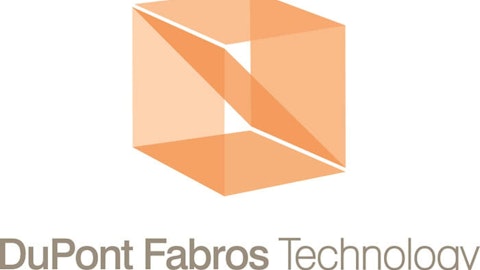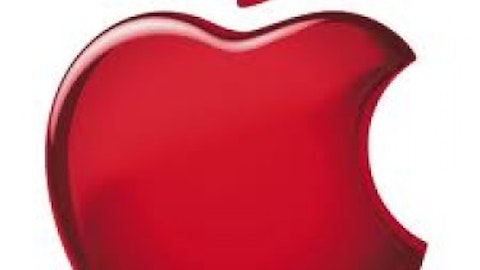“I’ll tell you why I like the cigarette business. It costs a penny to make. Sell it for a dollar. It’s addictive. And there’s fantastic brand loyalty.” – Warren Buffett
In 2012 Ernst and Young released a study that found that consumers in developed markets were significantly less likely to make purchasing decisions based on brand loyalty. Younger generations of consumers were more willing to switch brands than their previous generation counterparts and were more likely to compare different product offerings online to find the best value.
This change in the way consumers behave could pose a potential threat to many existing businesses and pave the way for new competitors to emerge, creating new opportunities in what were once thought to be dead industries.
SodaStream International Ltd (NASDAQ:SODA) is one example of a company that could potentially disrupt the status quo.
While not a beverage maker in the traditional sense, SodaStream sells home soda-making kits that allow consumers to make soft drinks themselves. The consumer buys a machine that carbonates water as well as bottles of soda concentrate that are used to flavor the water to give it its soda taste.
While Sodastream International Ltd (NASDAQ:SODA) is still a minor player in the beverage industry it is gaining traction. Revenues were up this quarter by 33.9% year over year, with its primary growth drivers being the Americas and Western Europe.
Some feared that Sodastream International Ltd (NASDAQ:SODA) was a fad product that would die out over time, but the company has shown itself to be consistently reliable with steady growth rates in the sale of both machines and consumables.
Additionally the company found that 70% of Sodastream International Ltd (NASDAQ:SODA) owners were still using their product after one year, and of those active users over 80% were using their machine at least once a week.
This shows that Sodastream International Ltd (NASDAQ:SODA) can maintain their razor/razor-blade model of selling consumers the machine first, and then continually selling them the soda concentrate to make the drinks.

Sodastream International Ltd (NASDAQ:SODA) also has to worry about a decline in soft-drink sales altogether. Since 2005, carbonated beverage sales have been declining continually and this could impact SodaStream negatively. SodaStream may be faced with the challenge of taking a larger share out of an increasingly smaller and smaller market.
Because SodaStream’s growth is tied primarily to the U.S. the company has to worry about a slowdown in U.S. sales growth. As the company matures it will become increasingly more difficult to grow sales and earnings at rate consistent with its past.
While the company still looks cheap at under 30 times trailing twelve-month earnings, and about 20 times foreword earnings, investors should look out for slowing growth rates. The company appears undervalued at today’s prices but given the rise in price that shares saw over recent months it may be prudent for investors to wait for a pullback before accumulating shares.
Also benefiting from this change in consumer trends is COTT Corporation (USA) (NYSE:COT).
Cott produces and distributes private label soft drinks throughout North America and Europe, and owns several brands of beverages including the non-North American version of RC Cola.
While COTT does have some interesting opportunities opening up it is unlikely that it will benefit much from these changes.
For starters Cott Corporation (USA) (NYSE:COT) does not offer a compelling reason to switch beverage brands for most of their products. Consumers are not likely to switch from The Coca-Cola Company (NYSE:KO) or PepsiCo, Inc. (NYSE:PEP) to RC Cola merely for cost savings, and the brands behind any successful private label product that they manufacture are likely to be bought out by either Pepsi or Coke.
Unlike Sodastream International Ltd (NASDAQ:SODA), which offers several benefits to consumers including lower calorie drinks, environmentally friendly products, and convenience, Cott Corporation (USA) (NYSE:COT) has no advantages besides offering a marginally lower price than its name brand competitors.
For this reason Cott Corporation’s growth could be limited.
One area in particular, however, where Cott Corporation (USA) (NYSE:COT) could benefit is oddly enough in SodaStream’s growth. Sodastream International Ltd (NASDAQ:SODA) announced in March a deal with Cott Corporation that would allow Cott to manufacture SodaStream flavor concentrates in the U.S. This deal will be great for Cott as it gives the company another product that will likely continue growing for years to come.
But even with this deal, the business does not look great.
For starters the company has low profit margins, $600 million in debt (more than half its market cap!), and inconsistent earnings.
While the company’s free cash flow numbers look slightly better than its earnings and the company does offer a solid 2.8% yield, I’m staying away. There are much better companies to invest in with significantly better business models.
The Coca-Cola Company (NYSE:KO) and PepsiCo, Inc. (NYSE:PEP) are among the first to come to mind.
Coca-Cola is among the most iconic brands. The name is the second most recognized term around the world after the word “okay.” But can Coke’s brand overcome the change in consumer trends that are currently underway?
According to the 2012 Ernst and Young report, while western consumers are becoming increasingly less loyal to particular names, emerging market consumers are becoming more likely to make their purchasing decisions based on a product’s brand.
This helps explain the growth of products such as The Coca-Cola Company (NYSE:KO) in emerging markets.
While per capita consumption of Coca-Cola products has fallen from 2002 to 2012 in the U.S., worldwide consumption has increased during that same period of time.
Per capita consumption of Coca-Cola Beverage Products – based on U.S. 8 fluid oz of a finished product






